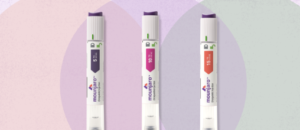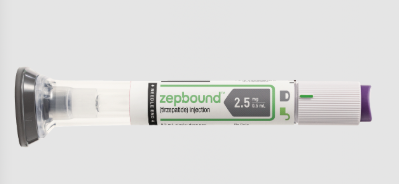“Tirzepatide and heart health improvement”
Tirzepatide and heart health improvement in detail.
- Introduction: Tirzepatide and Cardiovascular Context
Tirzepatide: As established, this is an injectable dual GIP/GLP-1 receptor agonist, marketed as Mounjaro (for Type 2 Diabetes – T2D) and Zepbound (for chronic weight management). Its primary actions involve improving blood sugar control, enhancing insulin sensitivity, reducing appetite, and causing significant weight loss.
Heart Health Context: Cardiovascular diseases (CVD), including heart attacks, strokes, and heart failure, are leading causes of morbidity and mortality worldwide. Metabolic conditions like T2D and obesity are major drivers of cardiovascular risk. Therefore, treatments that effectively manage T2D and obesity are increasingly evaluated for their impact on heart health. There’s significant interest in whether Tirzepatide not only improves metabolic markers but also provides direct cardiovascular protection.
- Mechanisms for Potential Heart Health Improvement with Tirzepatide:
Tirzepatide is believed to improve cardiovascular health through multiple pathways, both indirectly (by improving risk factors) and potentially directly:
- Indirect Benefits (via Risk Factor Modification):
Significant Weight Loss: Obesity puts immense strain on the cardiovascular system. The substantial weight loss induced by Tirzepatide (15-22%+ in trials) is likely a major contributor to its CV benefits. Weight loss helps lower blood pressure, improve lipid profiles, reduce inflammation, and decrease the workload on the heart.
Improved Glycemic Control: For individuals with T2D, high blood sugar levels damage blood vessels over time. Tirzepatide provides robust and sustained A1c reduction, which is crucial for reducing long-term microvascular and contributing to macrovascular risk reduction.
Blood Pressure Reduction: Clinical trials consistently show that Tirzepatide leads to modest but clinically meaningful reductions in both systolic and diastolic blood pressure (often in the range of 3-7 mmHg systolic). This effect is partly due to weight loss but may also involve direct mechanisms like increased sodium excretion (natriuresis) influenced by GLP-1/GIP.
Improved Lipid Profiles: Tirzepatide favorably impacts blood fats, significantly lowering triglycerides and VLDL cholesterol. It can also increase HDL (“good”) cholesterol, although effects on LDL (“bad”) cholesterol can be more variable. Overall, these changes generally contribute to a less atherogenic (plaque-forming) lipid profile.
Enhanced Insulin Sensitivity: Insulin resistance is closely linked to endothelial dysfunction (impaired blood vessel function), inflammation, and increased CV risk. By improving insulin sensitivity, Tirzepatide may improve vascular health.
Reduced Visceral Adiposity: Weight loss with Tirzepatide includes reduction of visceral fat (fat around internal organs), which is strongly associated with metabolic dysfunction and cardiovascular risk.
Reduced Inflammation: Obesity and T2D are associated with chronic low-grade inflammation, a key factor in atherosclerosis. Tirzepatide may help reduce markers of systemic inflammation (like C-reactive protein – CRP), partly through weight loss and improved metabolic control.
- Potential Direct Cardiovascular Effects:
GLP-1/GIP Receptors in the CV System: Receptors for both GLP-1 and GIP are found on various cells within the cardiovascular system, including heart muscle cells (cardiomyocytes), endothelial cells lining blood vessels, and vascular smooth muscle cells.
Potential Actions: Activation of these receptors, particularly GLP-1, is thought to
potentially exert direct beneficial effects such as:
Improving endothelial function.
Reducing inflammation within blood vessel walls.
Potentially having positive effects on heart muscle contractility or cardioprotection during ischemia (lack of blood flow), although human data for Tirzepatide specifically is still developing.
- Clinical Evidence:
The evidence comes from two main sources:
Cardiovascular Risk Factor Improvements in Phase 3 Trials: The large-scale SURPASS (T2D) and SURMOUNT (Obesity) trials consistently demonstrated Tirzepatide’s superiority over placebo and often active comparators in improving the risk factors mentioned above (weight, A1c, blood pressure, lipids). This strongly suggested potential for downstream cardiovascular benefits.
Dedicated Cardiovascular Outcomes Trial (CVOT) – SURPASS-CVOT: This is the gold standard for proving cardiovascular benefit.
Purpose: To specifically determine if Tirzepatide (Mounjaro) reduces the risk of major adverse cardiovascular events (MACE) in patients with T2D and established CVD or high CV risk.
Design: A large, long-term, randomized trial comparing Tirzepatide against an active comparator, Dulaglutide (Trulicity), which is another GLP-1 RA already known to provide cardiovascular benefits.
Primary Endpoint: Typically, the first occurrence of a composite MACE endpoint (usually CV death, non-fatal heart attack, non-fatal stroke). The trial first tests for non-inferiority (Tirzepatide is no worse than Dulaglutide) and then, if met, for superiority (Tirzepatide is better than Dulaglutide).
Status & Reported Findings (as of early 2025): Top-line results for SURPASS-CVOT have been announced. Tirzepatide met the primary endpoint, demonstrating non-inferiority to dulaglutide for MACE reduction. While detailed results and subgroup analyses await full publication and presentation, this non-inferiority finding confirms that Tirzepatide provides cardiovascular safety comparable to another proven cardioprotective agent in its class for high-risk T2D patients. Some reports or analyses might also explore superiority, but the confirmed non-inferiority is the key outcome reported initially. This means Tirzepatide joins the class of metabolic drugs that are not associated with increased cardiovascular risk and offer at least comparable protection to established therapies.
Context from Class Effect: The positive CV outcomes demonstrated by several other GLP-1 RAs (Semaglutide, Liraglutide, Dulaglutide) provide strong supporting evidence for the cardioprotective potential of this drug class, which Tirzepatide now confirms it shares.
- Clinical Significance & Implications:
Cardioprotective Profile: The SURPASS-CVOT results solidify Tirzepatide’s position as a therapy that not only manages T2D and/or obesity effectively but also offers cardiovascular safety, comparable to other proven agents. Any potential indication of superiority in secondary analyses would further enhance its profile.
Treatment Guidelines: Positive CVOT data typically leads to recommendations in clinical practice guidelines for using the drug in high-risk patients with T2D to manage cardiovascular risk alongside glucose control.
Broader Potential: While SURPASS-CVOT focused on T2D patients, the profound weight loss and risk factor improvements seen in obesity trials suggest potential cardiovascular benefits may also extend to individuals with obesity but without T2D, although dedicated CVOTs in that specific population would be needed for definitive proof and indication.
- Important Considerations:
Tirzepatide requires a prescription and ongoing medical supervision.
Standard side effects (mainly gastrointestinal) and contraindications apply.
The demonstrated CV benefits in CVOTs are typically observed in populations already at high cardiovascular risk over a period of years.
Conclusion:
Tirzepatide demonstrates significant potential for improving heart health, supported by strong evidence of its ability to favorably modify multiple major cardiovascular risk factors, including substantial weight loss, improved glycemic control, reduced blood pressure, and improved lipid profiles. The dedicated cardiovascular outcomes trial, SURPASS-CVOT, has confirmed Tirzepatide’s cardiovascular safety by demonstrating non-inferiority compared to dulaglutide in reducing major adverse cardiovascular events in high-risk T2D patients. This positions Tirzepatide not only as a powerful metabolic therapy but also as a valuable agent in the context of cardiovascular risk reduction for appropriate patient populations, particularly those with Type 2 Diabetes. Further data and analyses will continue to refine our understanding of its full cardiovascular impact.

“Tirzepatide and heart health improvement”
Route
Doctor G Medical Excellence: Health Well-being and Longevity
URL: https://doctorgmed.com/
| Monday | 09:00 - 17:00 Open now |
| Tuesday | 09:00 - 17:00 |
| Wednesday | 09:00 - 17:00 |
| Thursday | 09:00 - 17:00 |
| Friday | 09:00 - 17:00 |
| Saturday | 09:00 - 17:00 |
| Sunday | Closed |







